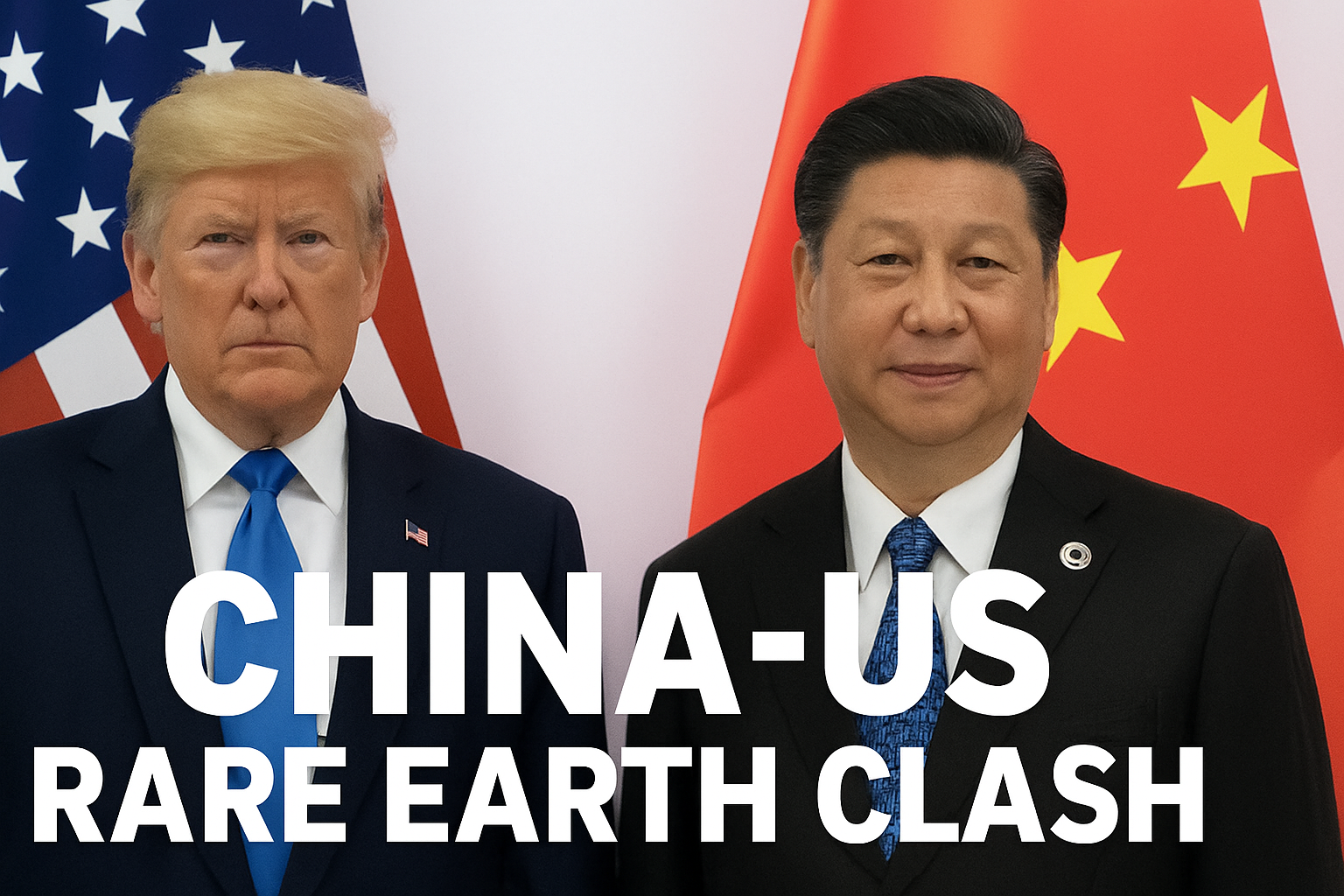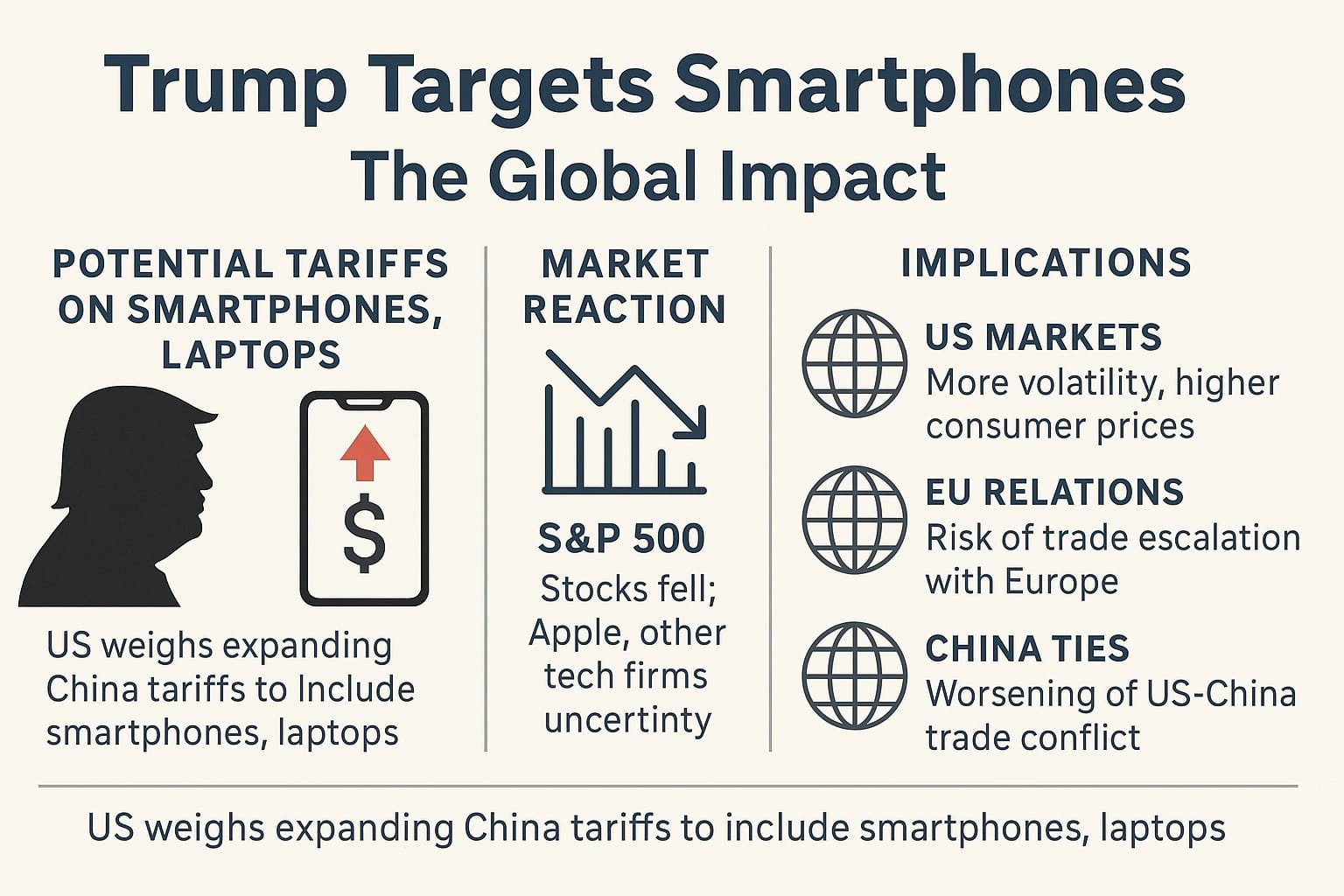
In a sharp escalation of trade tensions, U.S. President Donald Trump has reignited fears of a transatlantic tariff war by threatening sweeping new duties on smartphones and laptops. The move could have deep implications not only for tech giants like Apple and Samsung but also for global supply chains and diplomatic relations between the United States and the European Union.
Speaking on Friday (May 23, 2025), Trump reaffirmed his commitment to impose a 50% tariff on European Union exports and a 25% levy on Apple and Samsung devices if manufacturing does not shift back to the United States. His message was blunt: trade partners either play by his rules or face economic consequences.
Trump’s statement, made in a social media post, claimed the higher tariffs on the EU would take effect starting June 1. “Our discussions with them are going nowhere,” he wrote. “They are very difficult to deal with.” He said he was tired of playing nice and declared, “It’s time that we play the game the way I know how to play the game.”
The markets responded swiftly. The S&P 500 Index dropped sharply before recovering slightly later in the day. Tech stocks, especially Apple, saw significant declines as investors braced for higher costs and supply disruptions. Analysts warned that a 25% tariff on Apple’s China-made iPhones could raise prices by over $100 per device, directly impacting American consumers.
Behind the political rhetoric lies a broader strategy. President Trump has long positioned himself as a trade warrior, targeting what he considers unfair practices by foreign governments. His earlier rounds of tariffs during his first term focused on steel, washing machines, and solar panels. This time, however, the stakes are higher. Smartphones and laptops are no longer luxury items—they are essential tools for modern life.
For Apple, the risk is considerable. More than 90% of iPhones are assembled in China, mostly through contract manufacturers like Foxconn. A sudden tariff could severely dent Apple’s profitability unless it absorbs the cost or passes it onto consumers. Both options pose challenges: squeezing margins could hurt shareholders, while higher prices may alienate customers in an already competitive smartphone market.
Trump’s remarks also come at a time when Apple has been trying to diversify its manufacturing footprint. The company has started assembling some devices in India and Vietnam, but production volumes remain small compared to China. Scaling operations in these new regions will take years, not months.
Former Soros Fund CIO Dawn Fitzpatrick Bessent, speaking on Bloomberg Television, warned that Trump's tariff threats would "light a fire under the EU." She added that the president appeared frustrated with Europe’s unwillingness to yield to American trade demands. Trump has accused the EU of being resistant to negotiation, stating, “They don’t go about it right.”
The European Union, for its part, has been trying to re-engage with Washington to avoid an all-out trade confrontation. According to a European Commission spokesperson, the EU’s trade chief Maros Sefcovic planned to hold a call with Jamieson Greer, Trump’s U.S. counterpart, in an attempt to restart stalled talks.
But the timing of Trump’s latest threat has overshadowed diplomatic efforts. Irish Prime Minister Micheál Martin called Trump’s statement “enormously disappointing” and warned that such tariffs are “damaging to all sides.” Martin posted on X, formerly Twitter, that “a negotiated outcome is the best possible result for both sides and for global trade.”
The broader implications are worrying. Economists from Bloomberg estimate that Trump’s proposed tariffs could hit $321 billion worth of US-EU goods. This would lower U.S. GDP by up to 0.6% and push inflation up by 0.3%. In a politically charged atmosphere, such economic tremors could carry real consequences.
While Trump’s latest missives echo familiar themes from his first term, there are notable differences. Previously, he often paired trade threats with behind-the-scenes negotiations. Now, his tone suggests a desire to act unilaterally. “We’ve set the deal,” Trump declared. “It’s at 50%.”
That bravado leaves companies like Apple scrambling for answers. The firm’s CEO, Tim Cook, who has historically maintained strong ties with Trump, was reportedly in talks with officials over the potential impact. Apple declined to comment directly on the tariff threat but has previously said that trade tensions hurt innovation and the ability to compete globally.
Behind the scenes, sources familiar with the matter say the Treasury Department did not immediately respond to Trump’s proposal. However, some officials acknowledged that the tariff threat represented a renewed push for what insiders describe as “economic nationalism.” The aim, they say, is to pressure allies and rivals into trade concessions that favor American industry.
Trump’s push also coincides with a wider debate in Congress over packaging tax reform and trade incentives. Some lawmakers have argued that the U.S. needs stronger levers to bring jobs back from Asia, especially in high-tech manufacturing. However, critics point out that punitive tariffs often backfire, leading to higher costs and retaliatory measures.
The EU, meanwhile, has outlined a new trade framework that aims to balance open markets with protective tools. The new measures include stricter enforcement of international labor rights, green standards, and policies to gradually reduce reliance on non-EU tech suppliers. But whether this will appease Trump—or provoke him further—remains to be seen.
As the calendar inches toward June, businesses, investors, and diplomats are watching closely. Trump’s tariff talk may still be just that—talk. But in the world of global trade, words can be as powerful as policies. And this time, the fallout could be felt in every pocket that carries a smartphone.


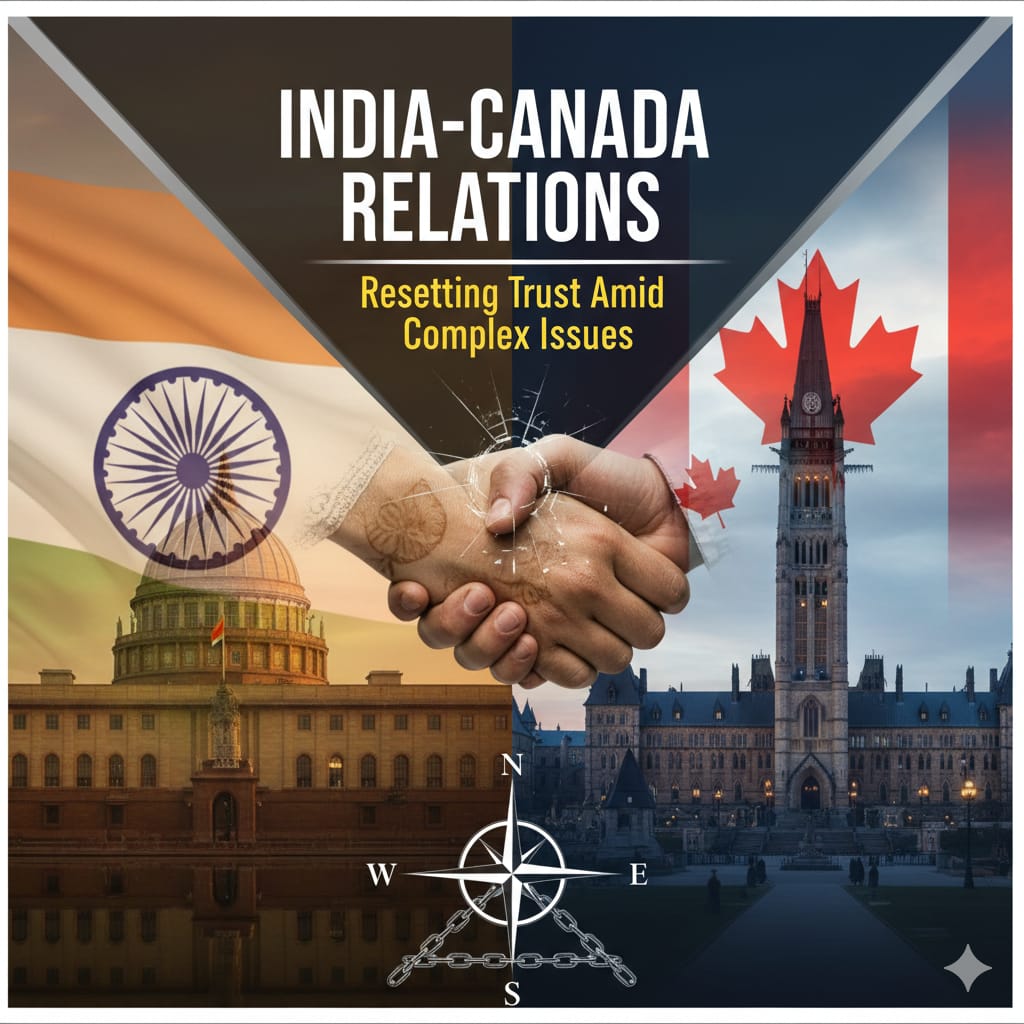
.jpeg)


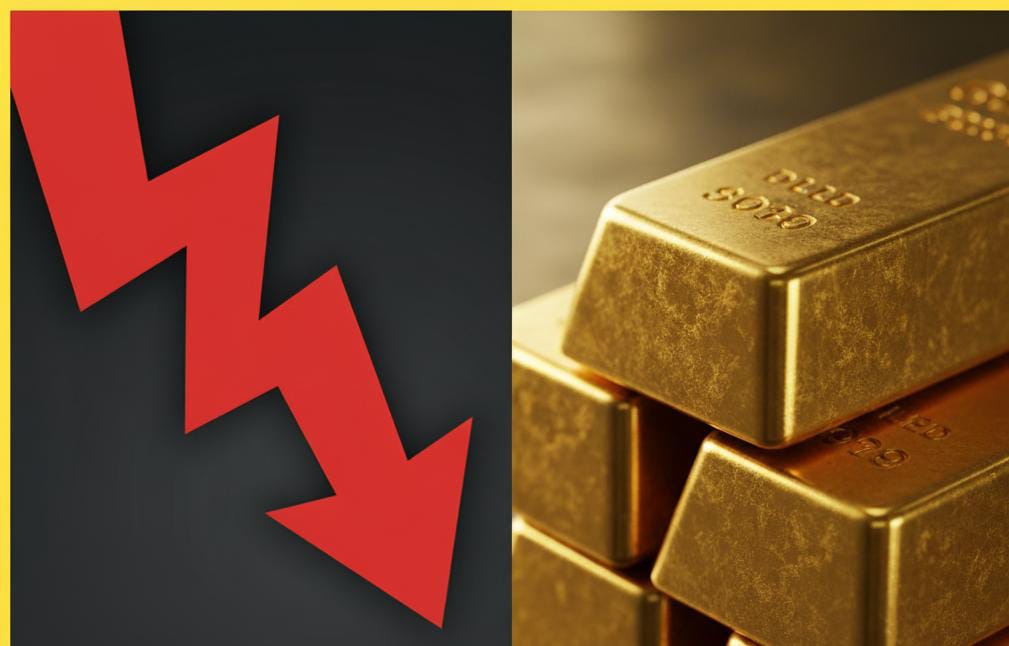


.jpeg)
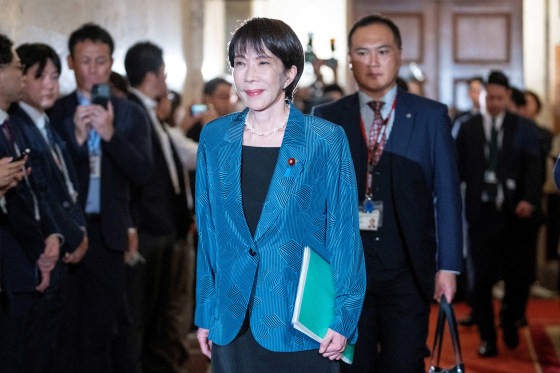


.jpeg)



.jpeg)
.jpeg)
.jpeg)
